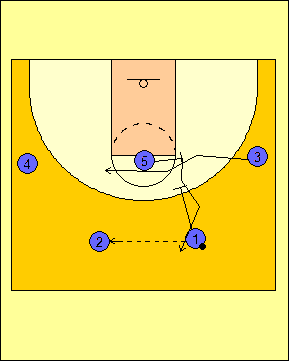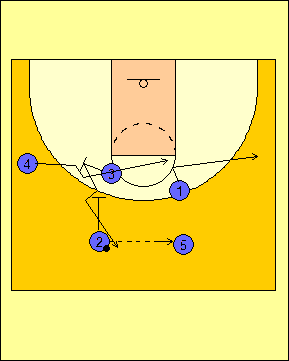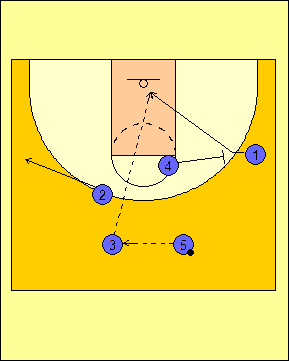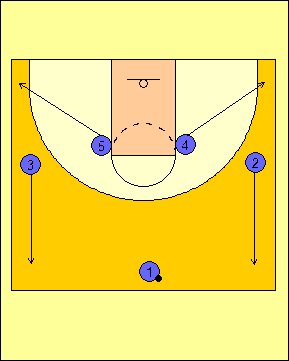|

Basketball Coaching DVD's at Championship Productions
DELAY OFFENSEWhen the lead needs to be secured late in the game,
coaches exercise their wisdom by utilizing an offense to shorten the
game and give the trailing team fewer opportunities to score points.
While delay offenses have been around for years, they became hugely
notable in the 1960's and 1970's thanks to the success of Dean Smith's
North Carolina teams and their ability to close out close games late.
Advantages of Delay Offense
The delay game serves one purpose: giving the other team fewer chances to score
by possessing the ball. When a team is leading or is at a competitive
disadvantage, a delay game can be effective in both regards. If a team
leads late in a game, holding the ball and running a delay offense will give the
team trailing fewer possessions and less time to come back and steal the game
late.
When it comes to playing against a team with superior talent, a delay game has
been found to keep the game close and allow the team with the least talent the
opportunity to be competitive. In basketball, it has been shown that when
teams with talent get into high-possession games, those teams will win those
games. To blunt this advantage, delay offenses have been used to keep the
game close and allow teams with less talent the chance to win.
Disadvantages of Delay Offense
The only disadvantages with delay offenses are related
to the tempo of the game. First, if you are a fast-breaking team,
the change from a fast tempo to a stall game can affect the comfort
levels of your players. You are playing at a fast tempo then
telling your team to slow things down. That will affect the
mindset of your team over the course of the game.
The other is that when you are playing in a delay
offense, the margin of error is small. Some teams at the high
school level will run the delay game as a strategy for the entire game.
When this happens, the need to score in the limited number of
possessions rises and the ability to get away with turnovers reduces.
Using Your Primary Half Court Offense
One way that you can develop a delay offense is to use your half court offense.
The way in which this would be done is if you play for nothing but lay-ups,
dunks, and jump shots at the end of the clock. The call for this in our
offense is "Biola". When this call is made, it does not matter what our
offense is, we are looking to run clock and take either a high-percentage shot
or a shot at the end of the clock.
High Flex Offense
For teams that run the Flex Offense, the High Flex
Offense is a great variation to take run clock and get backdoor lay-ups
off of the screening action. In Diagrams 1 and 2, the offense is
shown from a 2-3 high set. The continuity patterns remain the same
as that of the normal flex offense with a back screen for the first
cutter followed by a down screen for the player setting the back screen.

Diagram
1 |

Diagram 2 |
If at any moment the cut over the top is taken away, we will look to get the
back cut off of the screen. In Diagram 3, this occurs and we look to take
advantage for the lay-up.

Diagram
3 |
Four Corners
The Four Corners offense was made famous by Dean
Smith's teams at North Carolina. The offense starts from a 1-4
high set with the wings breaking to the corners near the half court
line while the posts fill the corners (Diagram 4).

Diagram
4 |
Read the full article and many others by signing up for a Coach Peel
Basketball membership today.
Membership Subscription with Monthly Payments: $6.00 per
month
Membership Subscription with Quarterly Payments:
$15.00 per quarter (save over 16.6%)
Membership Subscription with Annual Payments: $50.00 per
year (save over 30.5% & get your first 30 days free!)

© 2010-2017 Alan Peel Enterprises
|